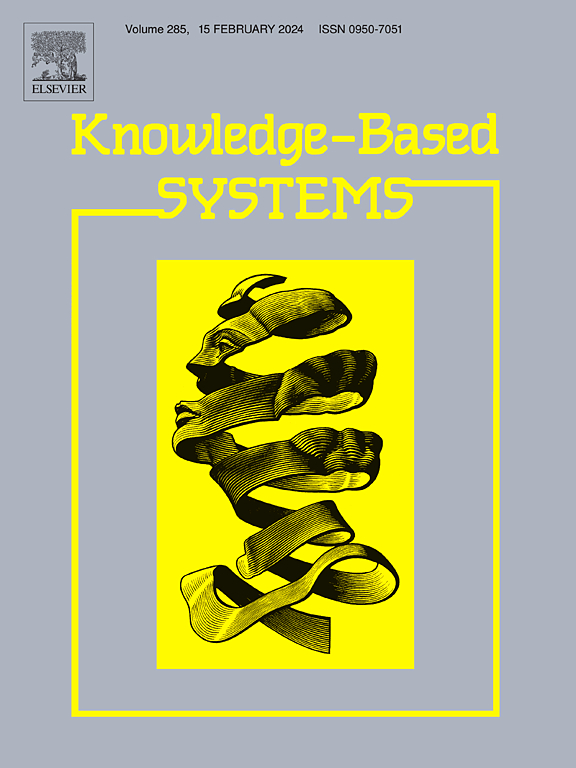Semi-supervised pairwise transfer learning based on multi-source domain adaptation: A case study on EEG-based emotion recognition
IF 7.2
1区 计算机科学
Q1 COMPUTER SCIENCE, ARTIFICIAL INTELLIGENCE
引用次数: 0
Abstract
Negative transfer mitigation in transfer learning and universal-model establishment are crucial in electroencephalography (EEG)-based emotion recognition research. This study proposed a multi-source domain adaptation pairwise transfer learning method (named PLMSDANet) for EEG-based emotion recognition. PLMSDANet reduced the impact of negative transfer using a semi-supervised strategy that introduced a limited set of target-labeled data and selected the most compatible source domains for further training. In addition, a two-stage feature extractor was employed. Initially, we used a general feature extractor to capture the common spatial–spectral features of all the domains. Subsequently, we created independent branches for each pair of source and target domains to learn specific features from each source domain, incorporating discrepancy loss to harmonize the classification results of the different source domains. Furthermore, pairwise learning was used to solve the problem of the intra-domain distribution of sample classes. Finally, a cross-subject strategy was used to validate the public datasets SEED and SEED-IV extensively, achieving average emotion recognition accuracies of 90.09% and 73.08%, respectively. In summary, PLMSDANet combines multi-source domain transfer learning with semi-supervised paired learning methods, effectively transferring knowledge from multiple source domains to the target domain while enhancing the distinguishability between classes. The experimental results show that the PLMSDANet method effectively mitigates the negative-transfer issue and demonstrates excellent recognition performance, surpassing that of state-of-the-art methods.
基于多源领域适应的半监督成对迁移学习:基于脑电图的情绪识别案例研究
在基于脑电图(EEG)的情感识别研究中,迁移学习中的负迁移缓解和通用模型的建立至关重要。本研究为基于脑电图的情感识别提出了一种多源领域适应性成对迁移学习方法(命名为 PLMSDANet)。PLMSDANet 采用半监督策略,引入有限的目标标记数据集,并选择最兼容的源域进行进一步训练,从而减少了负迁移的影响。此外,我们还采用了两阶段特征提取器。首先,我们使用通用特征提取器来捕捉所有域的共同空间-光谱特征。随后,我们为每对源域和目标域创建了独立分支,以学习每个源域的特定特征,并结合差异损失来协调不同源域的分类结果。此外,我们还利用成对学习来解决样本类别在域内分布的问题。最后,采用跨主体策略对公共数据集 SEED 和 SEED-IV 进行了广泛验证,平均情感识别准确率分别达到 90.09% 和 73.08%。总之,PLMSDANet 将多源领域迁移学习与半监督配对学习方法相结合,有效地将多个源领域的知识迁移到目标领域,同时增强了类之间的可区分性。实验结果表明,PLMSDANet 方法有效地缓解了负迁移问题,并表现出优异的识别性能,超过了最先进的方法。
本文章由计算机程序翻译,如有差异,请以英文原文为准。
求助全文
约1分钟内获得全文
求助全文
来源期刊

Knowledge-Based Systems
工程技术-计算机:人工智能
CiteScore
14.80
自引率
12.50%
发文量
1245
审稿时长
7.8 months
期刊介绍:
Knowledge-Based Systems, an international and interdisciplinary journal in artificial intelligence, publishes original, innovative, and creative research results in the field. It focuses on knowledge-based and other artificial intelligence techniques-based systems. The journal aims to support human prediction and decision-making through data science and computation techniques, provide a balanced coverage of theory and practical study, and encourage the development and implementation of knowledge-based intelligence models, methods, systems, and software tools. Applications in business, government, education, engineering, and healthcare are emphasized.
 求助内容:
求助内容: 应助结果提醒方式:
应助结果提醒方式:


